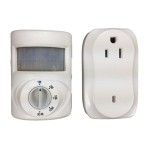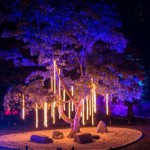The Ultimate Guide to Choosing the Best Low Voltage Outdoor Lighting
Transform your outdoor space into an enchanting oasis with the right low voltage outdoor lighting. From illuminating walkways to highlighting architectural features, these lights provide ambiance, safety, and enhanced curb appeal. To help you make an informed decision, here are the essential aspects to consider when selecting the best low voltage outdoor lighting:
Brightness and Lumen Output
Determine the desired brightness for your outdoor space. Lumen output measures the amount of light emitted by a bulb, with higher lumens indicating brighter illumination. Consider the size of your area, the type of plants or features you want to light, and the overall mood you aim to create.
Beam Angle and Distribution
The beam angle refers to the angle at which the light is emitted. Narrow beams focus light on specific areas, while wider beams disperse it more evenly. Choose beam angles based on the desired effect and the size of the space. Consider if you want to accentuate particular objects or illuminate larger areas.
Color Temperature
Color temperature is measured in Kelvin and refers to the color of the light emitted. Warm white (2700-3000K) creates a cozy and inviting atmosphere, while cool white (4000-5000K) provides brighter illumination. Choose color temperatures based on the desired ambiance and the surrounding elements.
Durability and Weather Resistance
Outdoor lighting systems must withstand harsh weather conditions. Look for fixtures with high IP ratings, which indicate their protection against dust and water. Choose materials like stainless steel or powder-coated aluminum that are resistant to rust and corrosion.
Energy Efficiency
Low voltage lighting systems consume less energy than traditional lighting. Consider LED bulbs, which provide high lumen output while using minimal electricity. This can save on energy costs and promote environmental sustainability.
Control and Flexibility
Modern low voltage lighting offers flexibility and control through features like dimming, motion sensors, and remote control. Dimming allows you to adjust the brightness, while motion sensors automatically turn on lights when movement is detected. Remote control allows for convenient operation from a distance.
Installation and Maintenance
Low voltage lighting systems are generally easy to install. However, it's advisable to consult a professional for proper wiring and placement. Regular maintenance, such as cleaning fixtures and replacing bulbs, ensures optimal performance and longevity.
Conclusion
Choosing the best low voltage outdoor lighting enhances the beauty, safety, and ambiance of your outdoor space. By considering brightness, beam angle, color temperature, durability, energy efficiency, control, and ease of installation, you can create a customized lighting system that meets your specific needs. Transform your outdoor paradise with the right lighting, and enjoy its benefits for years to come.

The Best Low Voltage Landscape Lighting Of 2024 Top Picks By Bob Vila

Helpful Hints On Low Voltage Landscape Lighting Transformers

Best Low Voltage Landscape Lighting Oclights

Best Low Voltage Landscape Lighting Lights All Year
.png?strip=all)
You Don T Need To Be A Licensed Electrician Appreciate The Beauty And Savings Of Columbia Sc Low Voltage Led Outdoor Lighti

Install Landscape Lighting For Added Curb Appeal

What Is The Best Low Voltage Landscape Lighting Mll Blog

The Best Led Landscape Lighting Kits For 2024 Popular Science

The Best Low Voltage Landscape Lighting Of 2024 Deck Solar Lights Garden Outdoor Design

High Voltage Vs Low Landscape Lighting Premier Of Md







